

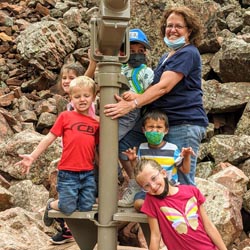
Hype:
This easy trail provides a great place to watch rock climbers or simply enjoy dramatic views of the canyon. The trail is .9 miles (one way) to the park boundary. The first .7 miles of the Fowler Trail also offers a self-guided nature walk brochure with corresponding signage as well as educational signs and fixed binoculars to view the climbers.
Trail Condition: Class 0 (Trail is paved. No elevation gain.)
Time: 1 hour
Length: 0.9 miles one way (most choose to hike 0.3 miles up and then return)
Elevation Gain: Negligible
Fees: Park Entrance
Recommended Ages:
 | 0-3 |
 | 4-11 |
 | 12-19 |
 | 20-49 |
 | 50-69 |
 | 70+ |
Recommended Months to Visit:
| Jan |
| Feb |
| Mar |
| Apr |
| May |
| Jun |
| Jul |
| Aug |
| Sep |
| Oct |
| Nov |
| Dec |
Links: https://cpw.state.co.us/placestogo/parks/EldoradoCanyon/Pages/Trails.aspx
Navigate to 39.929489, -105.290152.
Come stroll down the Fowler Trail on a journey through Eldorado’s unique canyon habitat and discover its rich diversity. At 6,000 feet in elevation, Eldorado Canyon State Park consists primarily of the montane forest ecosystem, found in elevations ranging from 5,500 to 9,000 feet. If you see ponderosa pine trees on the southern slopes and Douglas fir trees on the north, you are most likely in a montane forest! Eldorado also contains a riparian ecosystem, meaning WATER! The variety of food and access to water in montane forest and riparian ecosystems makes these areas ideal habitat for wildlife.
To live in Eldorado Canyon, you can’t be afraid of heights! Looking up at the sheer rock walls that dominate Eldorado’s landscape, it is easy to understand that wildlife require certain adaptations to call Eldorado home. The ability to fly is certainly an advantage! Prairie Falcons and bat species such as the little brown bat all live in crevices and small caves along the various rock formations. Caves and dens formed from fallen rocks and trees also provide suitable cover for black bears and mountain lions.
Youf’ re ready to begin your journey... Just follow the Bear Tracks! Before you start your stroll, make sure you are properly prepared. Bring plenty of water, sunscreen, and wear comfortable walking shoes. Restroom facilities are located in the Visitor Center. The Fowler Trail is an easy, flat trail (and it’s wheelchair accessible) so no need to worry about steep inclines or walking on loose rocks. Storms move swiftly through the canyon so packing a few protective layers is encouraged. If you have any questions feel free to contact any park staff member. If you do not plan on keeping this brochure please return it to the dispenser.
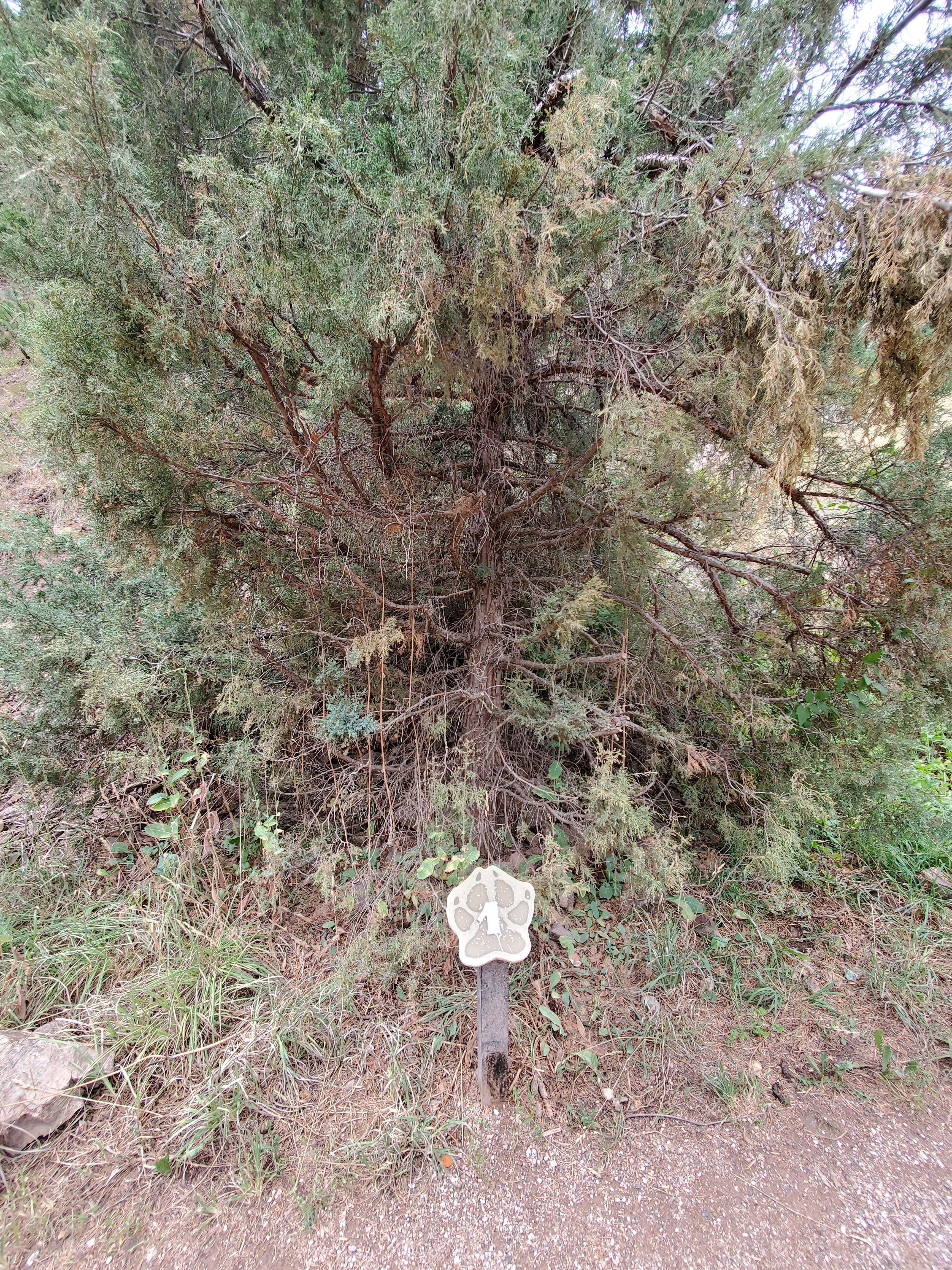
Rocky Mountain juniper is the only juniper of the eastern Foothills north of Colorado Springs This tree is found primarily on dry, open stands on hillsides. The fruit is eaten by birds and leaves by mule deer. American Indians used berries for mush, tea, cakes, and coffee. Berries were also chewed to settle stomachs or relieve cold symptoms.
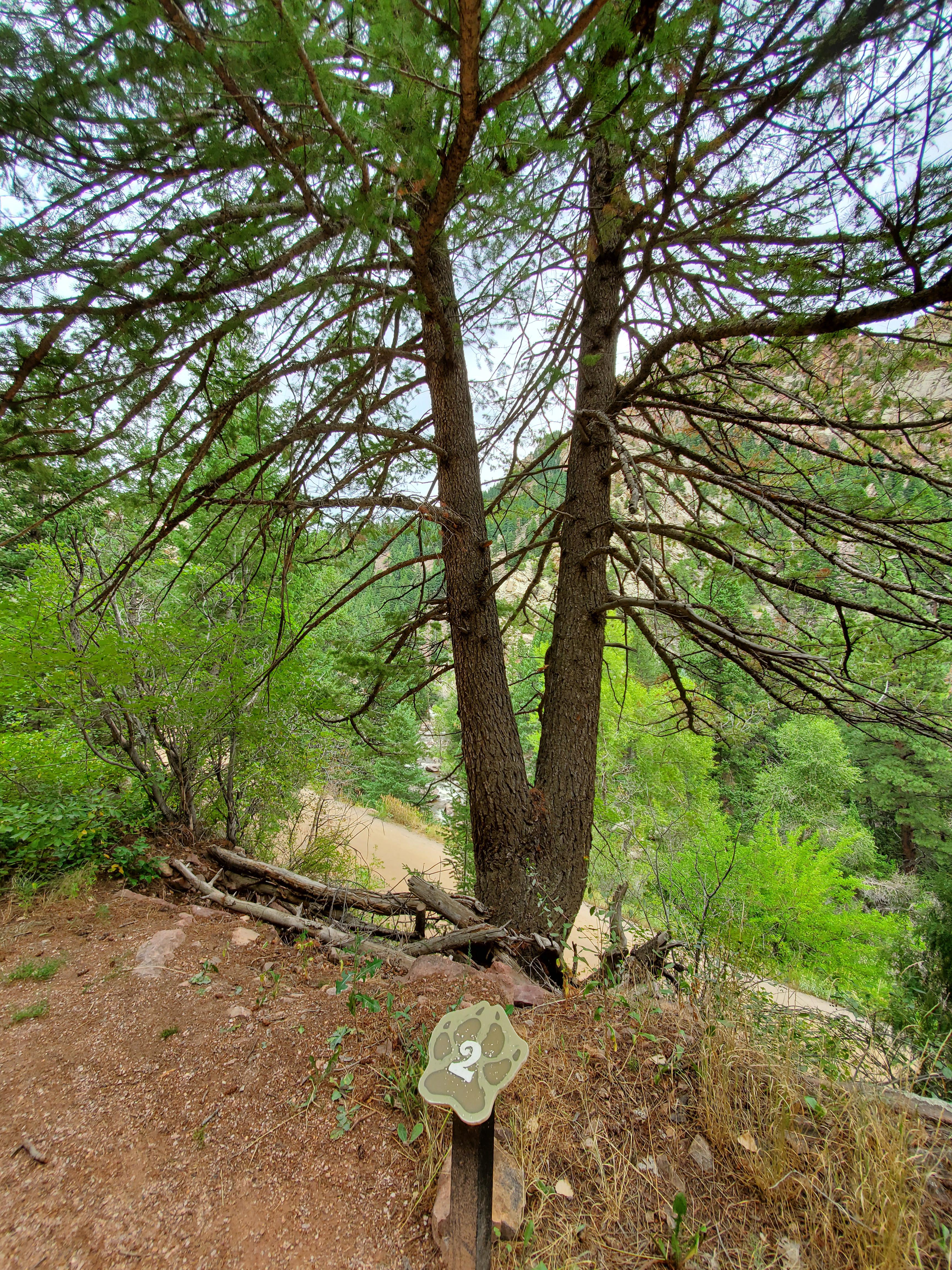
Douglas Fir is a shade tolerant tree found commonly on cooler north-facing slopes. Large, older trees are fire resistant due to their thick bark. See if you can find a fir cone lying beneath the tree. Douglas Fir cones are distinctive and unlike any other tree’s cone. Squirrels, chipmunks and birds eat the seeds. Native peoples used the fragrant fir boughs as bedding material and enjoyed the rare treat of sugar that sometimes forms on the needle tips.
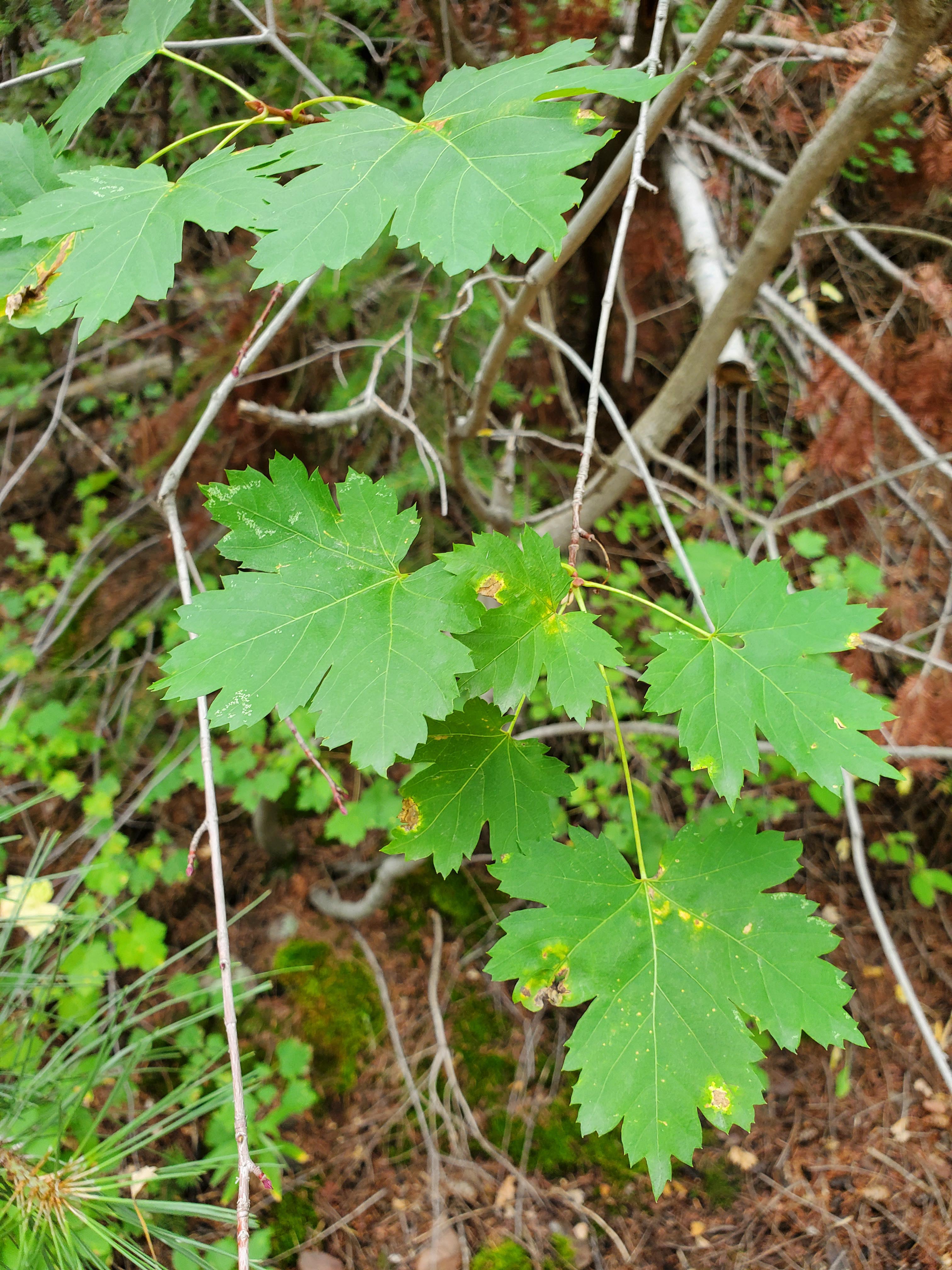
Rocky Mountain maples are one of the few trees in the canyon that display spectacular colors in autumn. Depending on the time of year, the leafs appear green, bright red/orange, or are gone all together! You may also see the seeds hanging together in paired "wings", sometimes called "helicopters" American Indians gathered the inner bark to make wine and used the sap for syrups and sugar. The maple also provided durable wood for arrow shafts, bows and snowshoes.

Keep your eye out for the FAKE rattlesnake on the rocks ahead. While sightings in the canyon are rare, the rocky environment provides prime habitat for western rattlesnakes. If you hear a rattle, the snake is alerting you. The snake is afraid of you so if you get too close, it may defend itself by striking. It you wait a few minutes, the snake will probably find a hiding spot. Don’t forget to read the interpretive signs to learn more about these amazing creatures.
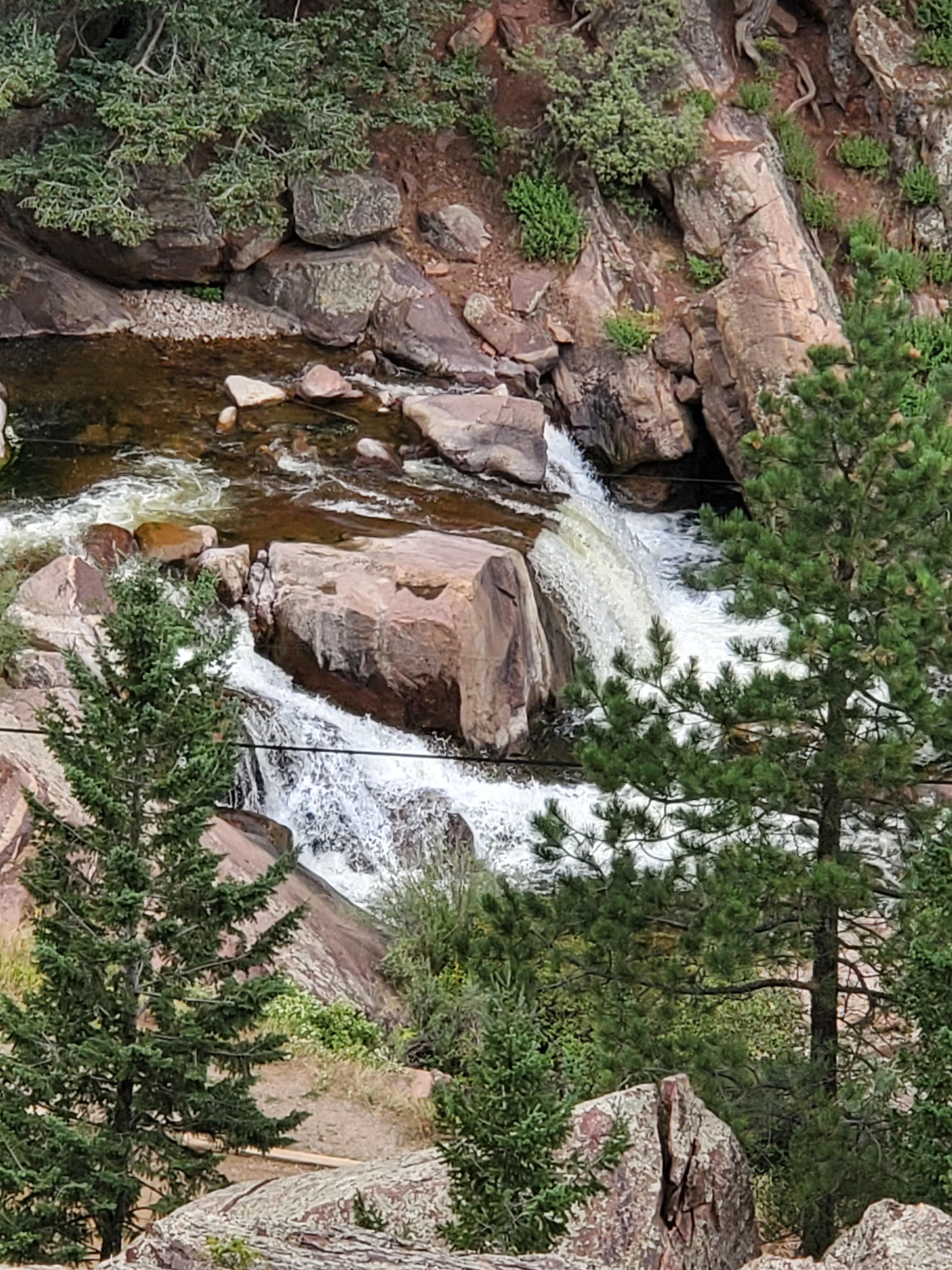
As the last Ice Age ended, Eldorado Canyon was carved from the incredible force of newly melted snow and ice. Today, South Boulder Creek continues to shape the canyon and originates as snowmelt from west of the Continental Divide The water is funneled through the Moffat tunnel and ultimately collected and released at Gross Reservoir.

Depending on the season, you will see either white flowers or dark red/purple berries clustered on the chokecherry’s branches. This tree gets its name from the bitter taste and choking sensation caused by eating the berries. The fruit provides food for many critters in the canyon, such as raccoons, bears, turkeys, and squirrels. Native peoples used the berries in stews, pemmican (an early form of trail mix/jerky), and for red dye. Today you can sample chokecherry jam, syrup,
Despite appearances, black bears are quite shy and non-aggressive, most likely fleeing when humans approach. The color of their fur can range from blonde to red to black. Bears are omnivores, meaning their diet consists of vegetation and meat. However, they prefer berries, nuts and roots. When chokecherries are ripe, it is common to see bear scat full of cherry pits! Bears enjoy picking through garbage cans and dumpsters. You can help save a bear’s life by bear-proofing your trash containers. Look for bear tracks and scat on the trails, road and near chokecherry trees.
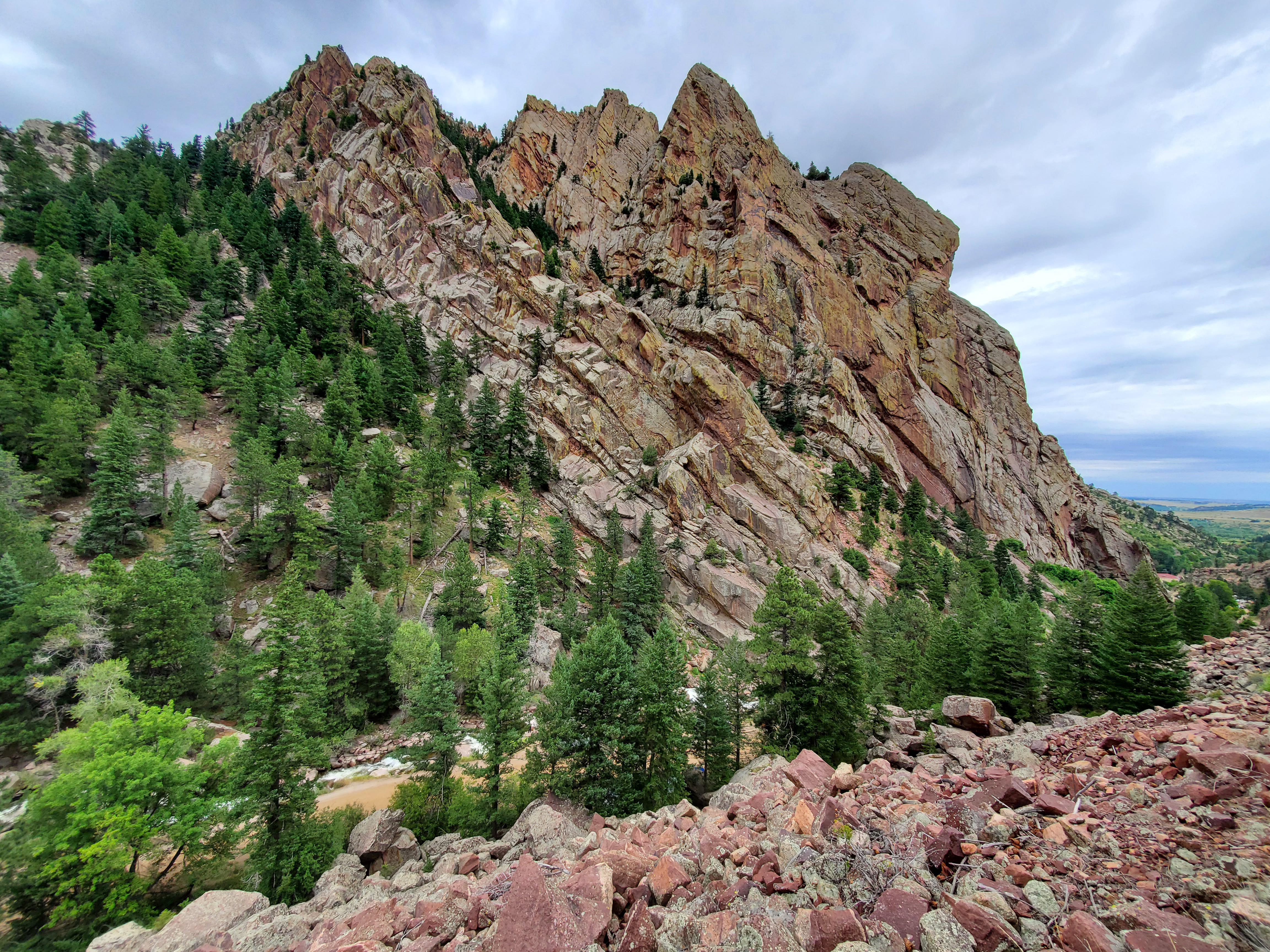
In the space of one mile, the cliffs of Eldorado Canyon reveal a 1.7 billion year panorama of geologic history! 300 million-year-old sandstone makes up most of the rock formations in the canyon. This sandstone consists of cemented rock material left over from the eroded Ancestral Rocky Mountains. Until the uplift of the current Rocky Mountains 66 million years ago, the sandstone lay in flat, horizontal layers. This rock is known as the Fountain Formation and is also exposed in Boulder’s Flatirons, Roxborough State Park, and Red Rocks Amphitheater.
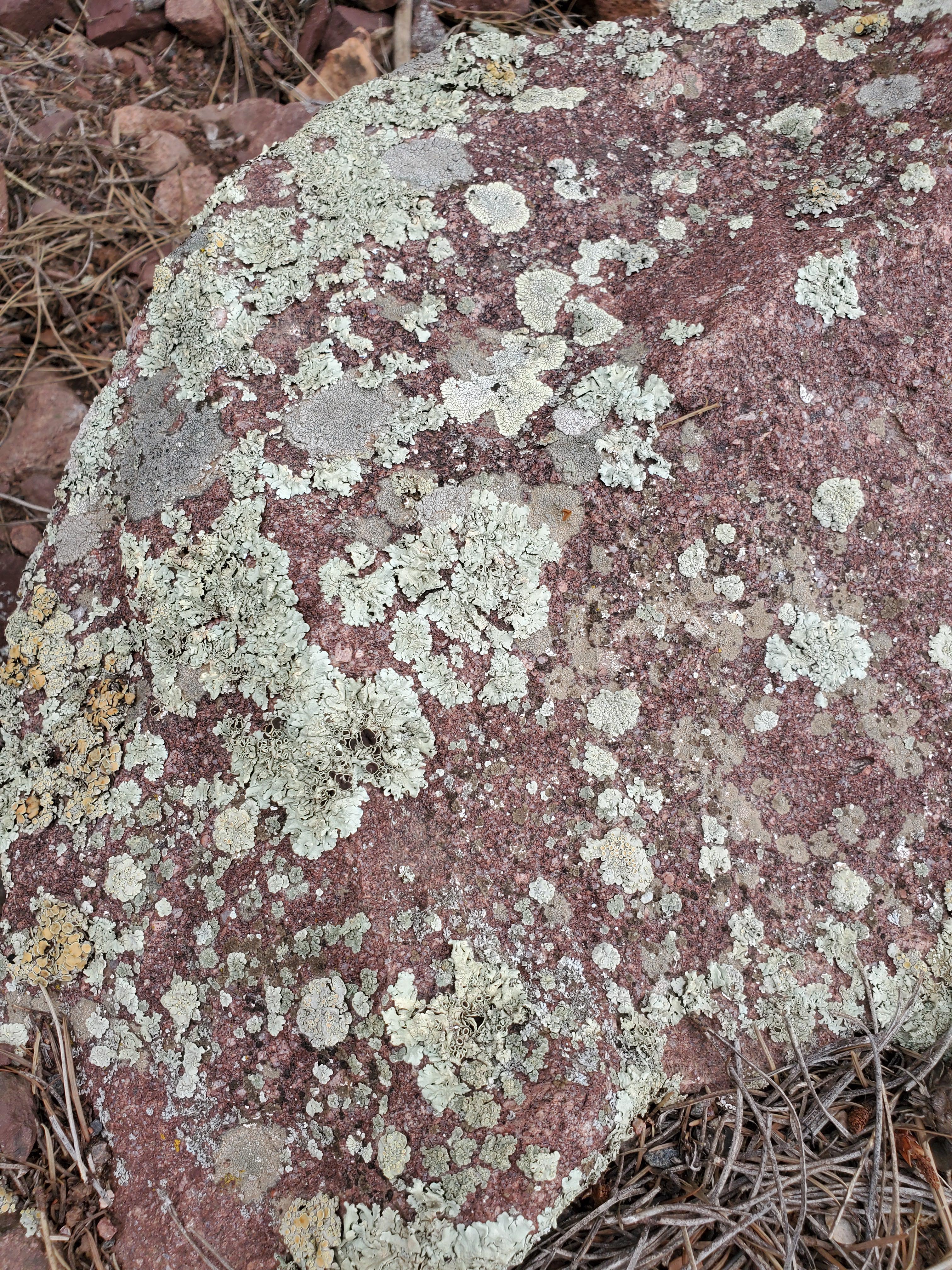
Look up! Eldorado Canyon owes its beautiful golden hues to all the lichen adorning the rocks (Eldorado is Spanish for "golden" or "gilded"). Lichens are a partnership between two plants: fungi and algae. The fungus stores water and provides structural support for the alga’s growth while the algae produces food. Lichens become dormant in dry times and can remain so for years until they soak up enough moisture to grow again. This unusual relationship allows lichens to grow where fungi and algae alone cannot, such as rocks, trees, and even metal.
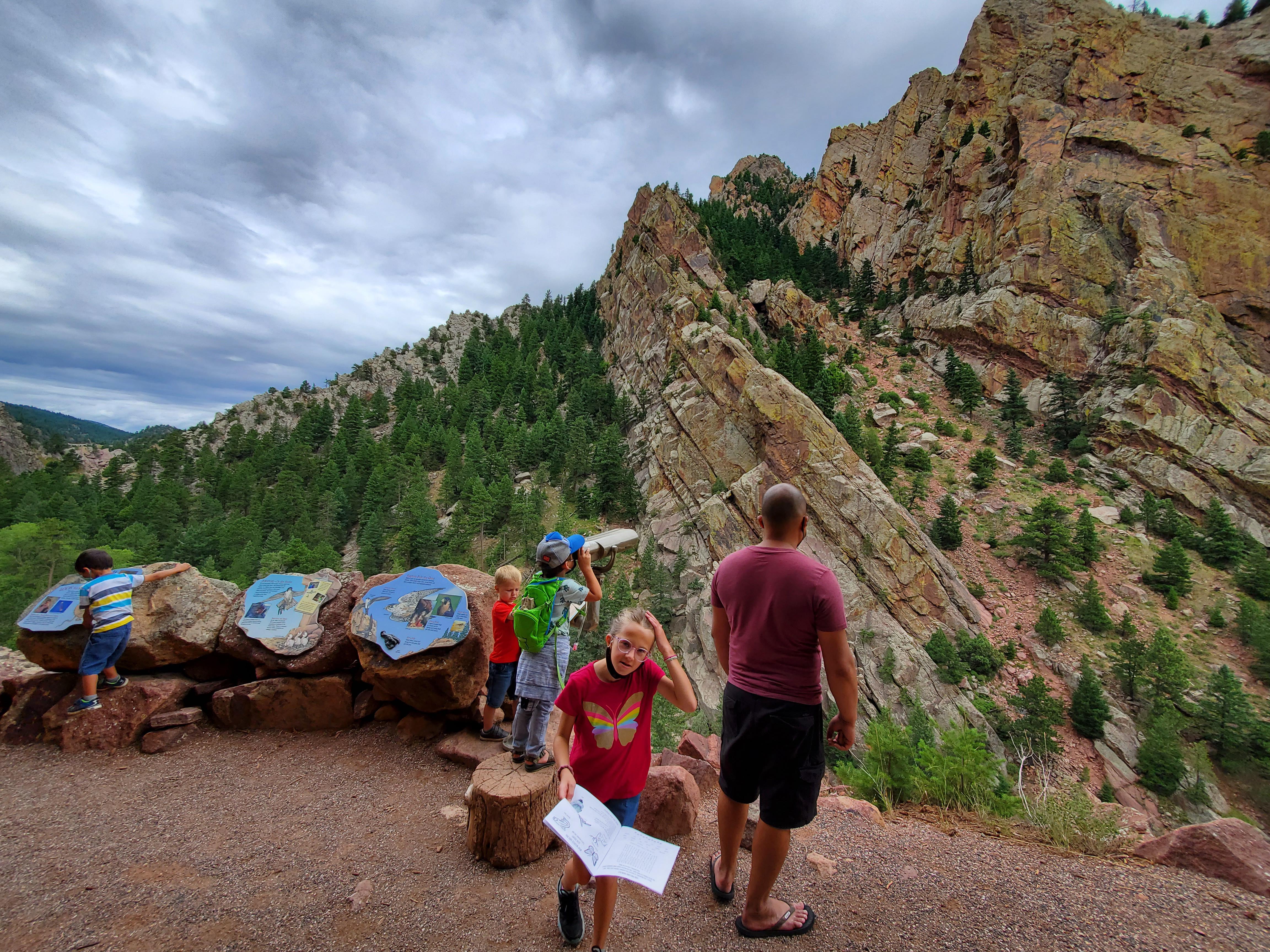
Prairie falcons live throughout Colorado. They nest high on cliffs offering protection from rough weather and potential predators! During flight, prairie falcons actively hunt small rodents and other birds in nearby open areas. Eldorado Canyon is fortunate to have a nesting pair of prairie falcons along Redgarden Wall. Since human disturbance often causes nest abandonment and failure, a number of rock climbing closures are in effect from February-July (breeding season). If you’d like to view the nest with a ranger, please contact the park. Don’t forget to check out the interpretive signs and binoculars!
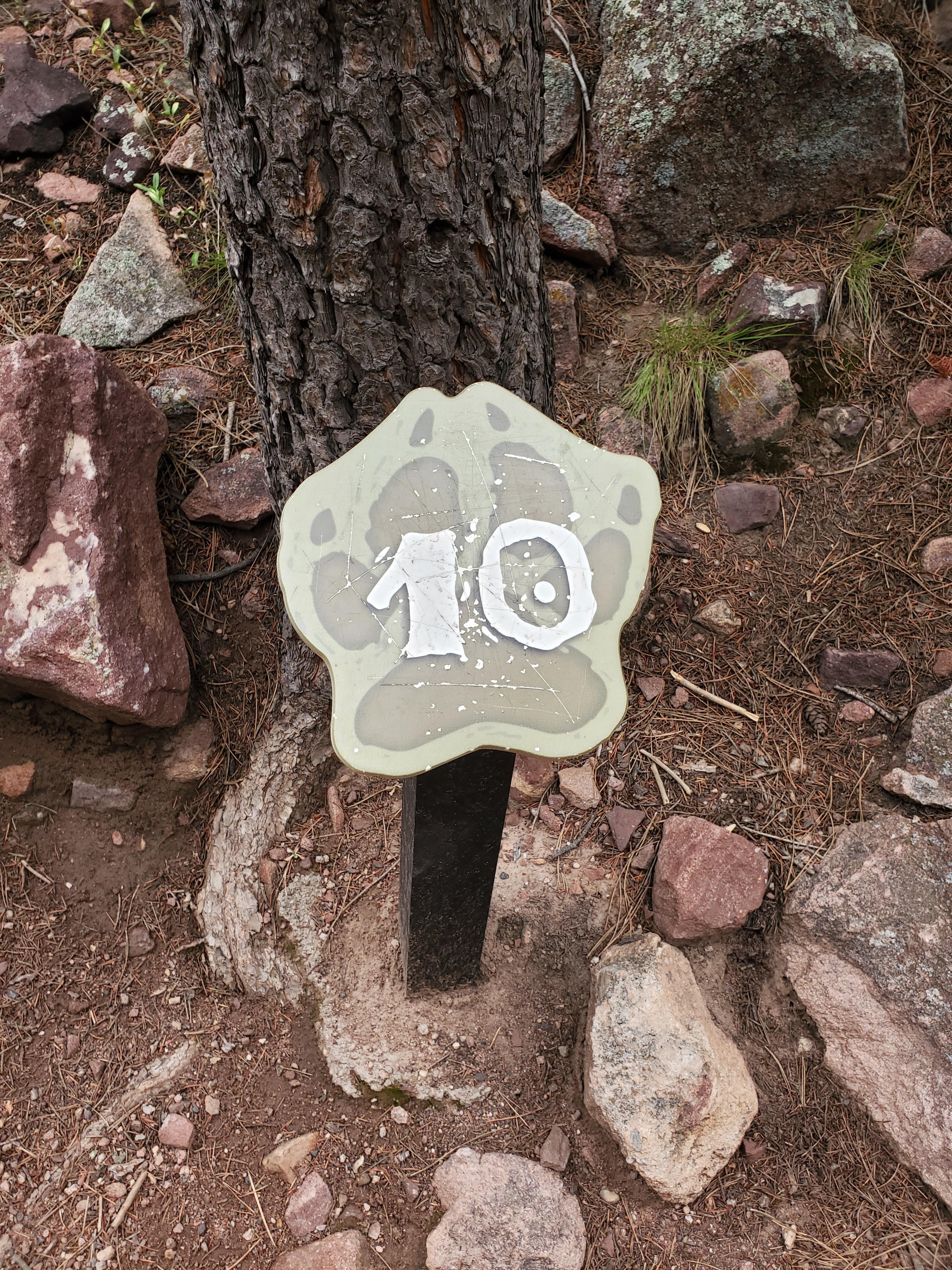
Ponderosa pines are drought tolerant trees found primarily on sunny south-facing slopes from 5,500-8,000 feet in elevation. The Abert’s squirrel, noted for the tufts of hair on its ears, relies on ponderosa pine trees for its existence. They eat the pinecone seeds and inner bark as well as nest high in the tree tops. Native peoples also ate the inner bark as well as ground the seeds into meal for bread. Make sure to smell the ponderosa’s bark-its fragrance is often compared to vanilla or butterscotch!
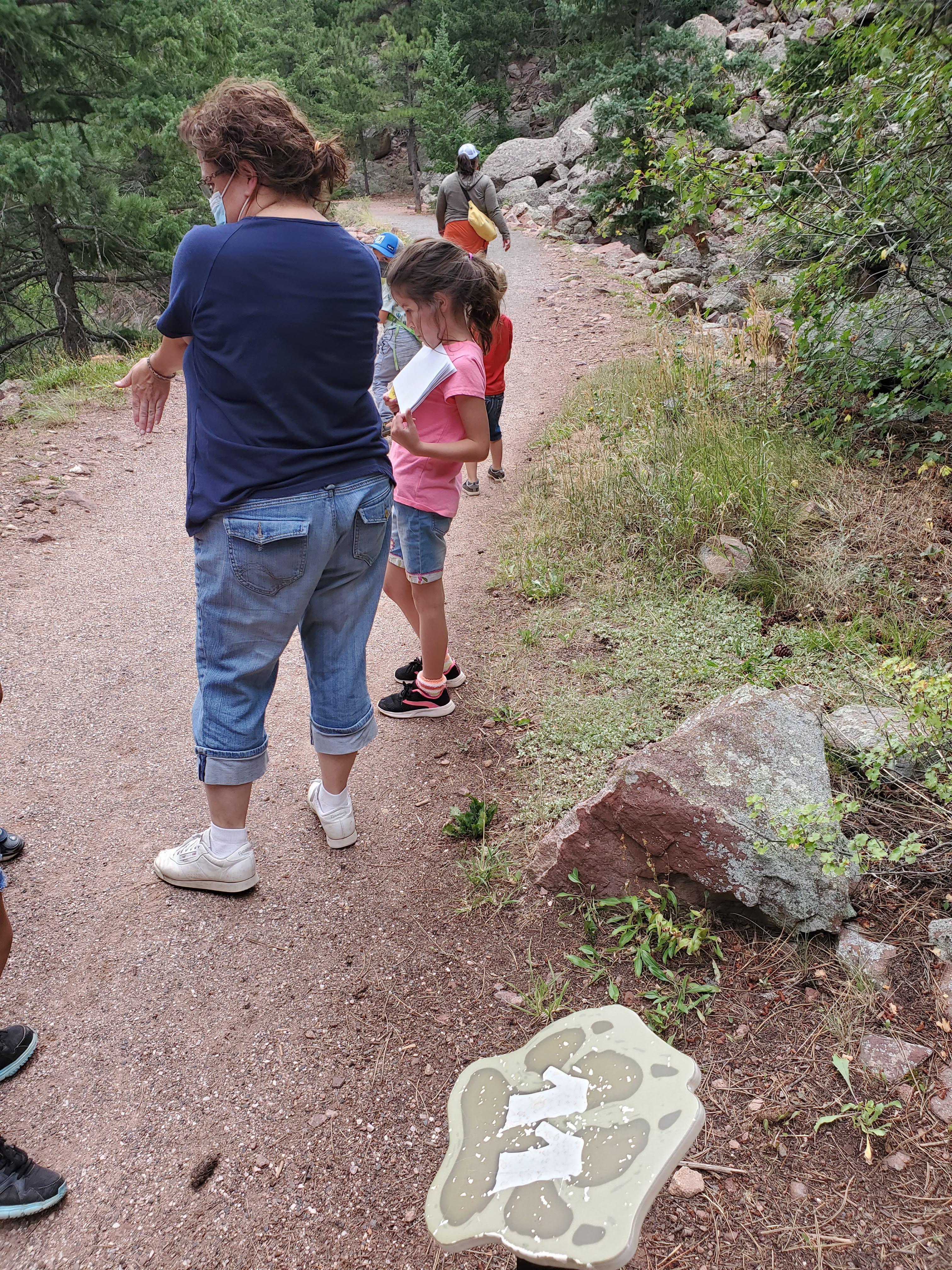
These majestic cats have the largest geographical range of any native American land mammal They make their homes in rough, broken terrain, especially in canyons and foothills. Mountain lions are carnivores, or meat-eaters, and slowly and quietly stalk prey until leaping at close range onto the animal’s back. In Boulder County the preferred source of food is mule deer, but they also eat raccoons, porcupine, squirrels, birds, and most other animals. If you happen to meet a lion on the trail, remain calm, do not turn your back and DO NOT RUN. Try to appear larger and talk loudly yet firmly. It attacked, use rocks and branches to defend yourself and fight back!
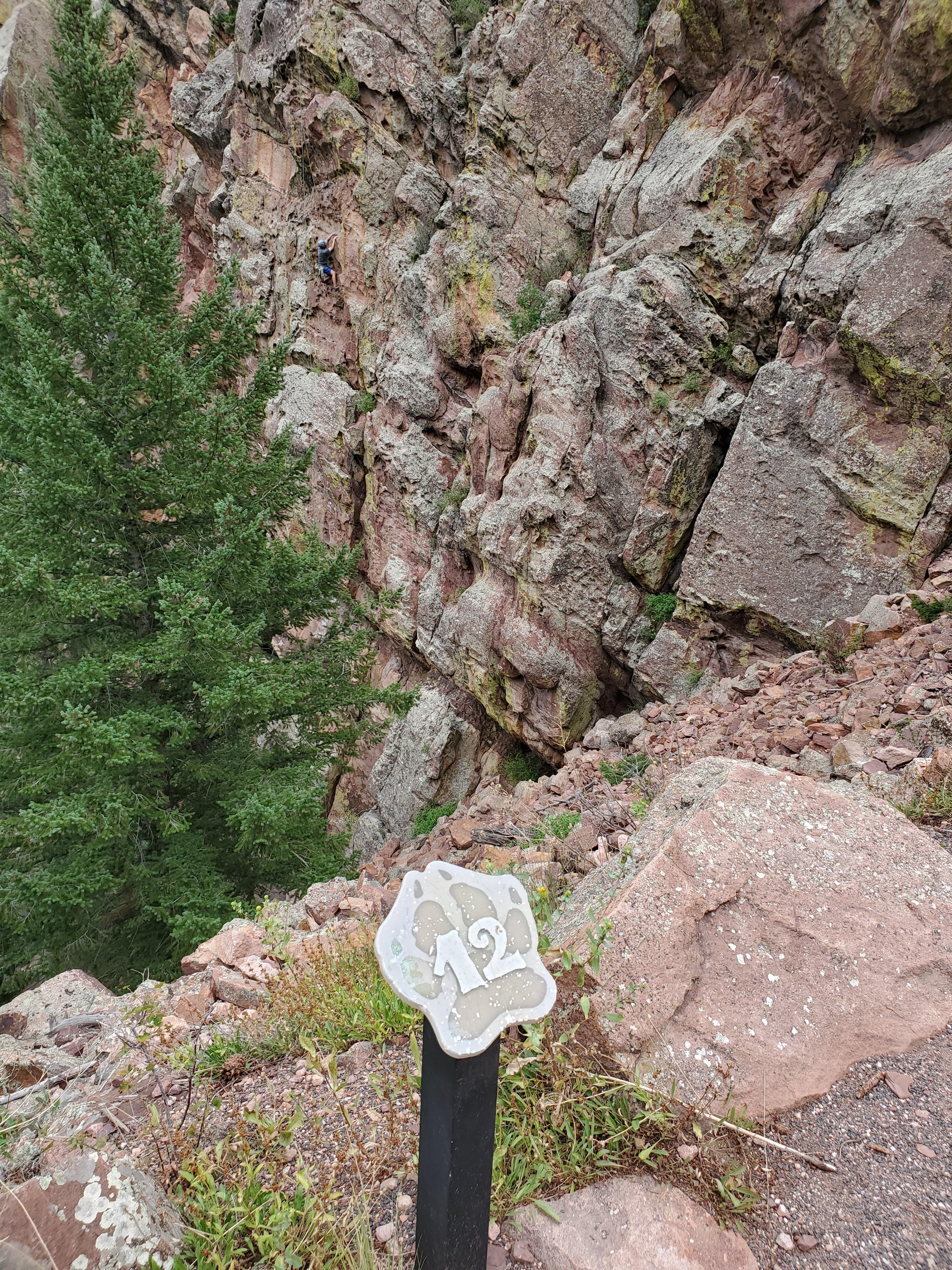
As you look around, you will notice many of the trees in Eldorado Canyon look as though they are growing right out of the rocks. Weather conditions like rain and wind can slowly erode the rocks, creating cracks and crevices. Lichens and mosses growing on rock surfaces break down the rock releasing nutrients. As dust, dirt, leaves, etc. collect in a crevice, the perfect home is created for a seed to land and grow. The tree then takes nutrients from the materials that continue to collect. As the tree develops, the roots leak acids further breaking down the rock for more nutrients.
Closest City or Region: Eldorado Canyon State Park
Coordinates: 39.929489, -105.290152
By Jeremy Dye
Jeremy Dye, Tara Dye, Savannah Dye, Madilyn Dye, Cooper Dye, Laura Dye, Arianne Dye, Miller Dye, Ondylyn Wagner, Jaren Wagner, Killian Wagner,
Our original plan was to go rock climbing at Eldorado Canyon, but when we got there, it was a bit overwhelming. There was no available parking anywhere near the area we wanted to climb, so we parked up near the visitor center instead. The visitor center didn't open until really late, and we didn't have cell signal to research other climbing areas, so we ended up lounging around for quite a while. We found a map of the park and decided to hike the Fowler Trail. When we got to the trailhead, we saw that there were supposed to be trail guides but the box was empty. So Jaren and I walked back to the visitor center, which was now open, and picked up the interpretive trail guide. We also got some junior ranger books and a magnet. We caught up with everyone else at Stop #4. We took the trail really slow and enjoyed the views. After the hike, we had a picnic at one of the pavilions next to the visitor center then left for Boulder Falls.